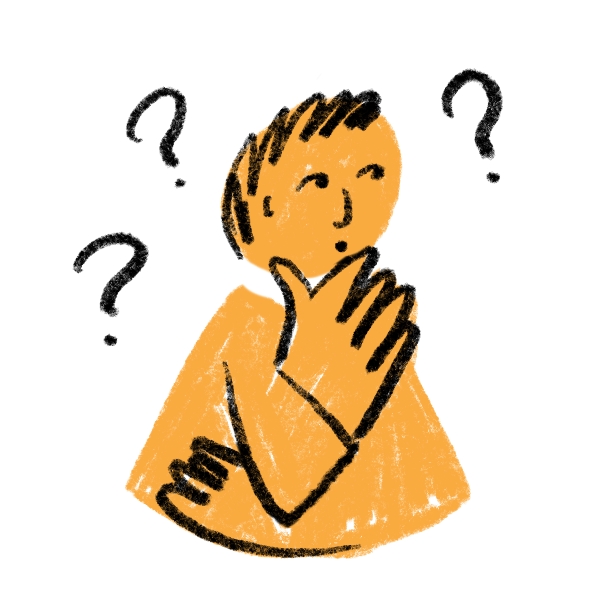The facts
Creating, modifying or sharing sexualised images is alarmingly common among rangatahi. Check out the stats below to see how it plays out with youth today.
Key Statistics
-
19.3%
of rangatahi had sent a sext
*Commonsense Media, 2021
-
34.8%
of rangatahi had received a sext
*Commonsense Media, 2021
-
14.5%
of rangatahi had forwarded a sext without consent
*Commonsense Media, 2021
-
40%
of teenage girls sext as a joke
*The National Campaign to Prevent Teen Pregnancy: Teenage Sexting Statistics. GuardChild.
-
34%
do it to feel sexy
*The National Campaign to Prevent Teen Pregnancy: Teenage Sexting Statistics. GuardChild.
-
12%
feel pressured to do it
*The National Campaign to Prevent Teen Pregnancy: Teenage Sexting Statistics. GuardChild.
-
61%
of people aged 13 to 24 reported being exposed to sexual imagery from other young kiwis
*A survey commissioned by the Graeme Dingle Foundation, Jan 2020
Sexualised Images Explained
Discover the risks associated with sexualised images and their impact on our rangatahi. During our exploration of the topic, we'll explore strategies to mitigate harm and promote a positive understanding of sexuality.

Sexting
What is it?
Sexting is the act of sending or exchanging sexually explicit messages, using an electronic device. It involves the sharing of texts, photos or videos, and can be either consensual or non-consensual.
Possible Drivers
- Intimacy and connection
- Sexual exploration and curiosity
- Peer pressure and social norms
- Experimentation and risk-taking
- Sensation or thrill-seeking
- Seeking validation
- Seeking evidence of commitment
Impacts
Sexting can have both positive and negative impacts. On one hand, it can enhance intimacy and communication in relationships. On the other, it can cause emotional distress, privacy breach, personal safety risk or even legal issues, particularly if rangatahi are under 18 years of age. It is important to consider these potential risks and make informed decisions when engaging in sexting.
Revenge porn
What is it?
Non-consensual sharing of nudes or sexualised images, otherwise known as revenge porn, occurs when explicit content is distributed without the person's consent. It is a form of image-based abuse, and is often carried out in text messages, group chats and on social media platforms.
Possible Drivers
- Revenge and retaliation
- Power and control
- Entertainment and amusement
- Access to technology
- Digital culture and norms
- A lack of awareness or empathy
Impacts
Because the explicit images can be difficult to remove from the internet, revenge porn can have severe consequences on our rangatahi. On top of the emotional and psychological repercussions, it can impact young people's reputations and relationships. Depending on the situation and age of rangatahi, there may also be legal implications.
Non-consensual content creation
What is it?
When someone creates sexualised images or videos without the person's knowledge or consent, it is considered non-consensual creation. This usually involves captural explicit content without the person's permission, and can be done using hidden cameras or tricks.
Possible Drivers
- Revenge and retaliation
- Power and control
- Sexual gratification
- Exploitation and blackmail
- Access to technology
- A lack of empathy or awareness
Impacts
Non-consensual creation is a serious breach of personal boundaries, privacy, trust, and consent for any person involved. It can cause major emotional and psychological harm, on top of leading to potential legal consequences for the creator of that content.
Sextortion
What is it?
Sextortion is the act of using explicit images to blackmail or coerce someone. The holder of the images will usually threaten to share private material with peers or the internet, asking for money or specific actions in exchange.
Possible Drivers
- Revenge and retaliation
- Power and control
- Financial gain
- Exploitation and manipulation
- A lack of empathy or awareness
Impacts
Sextortion can cause a lot of emotional distress and damage to a person's reputation and wellbeing. It is a serious breach of trust, consent, and privacy. In the case of sextortion, it's important for rangatahi to get help from legal and supportive resources.
AI porn
What is it?
AI porn is explicit content created or improved using artificial intelligence. It uses deepfake technology to change faces in videos or images. By analysing and copying facial features, it creates realistic-looking fake porn involving famous people, public figures, or even unknowing individuals.
Possible Drivers
- Power and control
- Personal gratification
- Exploring fantasies
- Desire for privacy or anonymity
- Access to, and curiosity about technology
- A lack of empathy or awareness
Impacts
AI porn can affect our rangatahi's emotional wellbeing and sense of self. If the content becomes public, the rangatahi's reputation, career opportunities and relationships may also be severely impacted. Should the young person be underrage, there may also be legal implications.
When people come to us for advice or help getting content removed, (...) they feel exposed and humiliated to the point where it's seriously affecting their everyday lives.
Go further
Looking to dive deeper into the topic of rangatahi and sexualised images? Here is a short list of recommended resources which can help bridge any knowledge gaps and offer tips on this theme.
-
What is objectionable and restricted material?
It may not always be clear what counts as restricted content. This article from the Department of Internal Affairs describes what counts as objectionable content in Aotearoa New Zealand.
-
Diving into the Harmful Digital Communications Act
While technology has its many perks, it can also be used to harm others. This article dives into the Harmful Digital Communications Act and how it aims to keep the internet a safe space for all.
-
More on Image-Based Abuse
Image-based abuse revolves around the non-consensual sharing of images or videos. This type of abuse is around us more than we know, but it may not be clear when the line is crossed. This Netsafe page will give you some more information on how to recognise, remove images, and respond.
-
The Bare Facts Campaign
The Bare Facts is a campaign developed by Rangatahi, Netsafe and the Classifications Office Te Mana Whakaatu to share the risks linked to taking and sharing intimate images.
Prepare
Before deciding whether a behaviour is age-typical, concerning or harmful, you'll need to ask yourself and rangatahi important questions. Use the following prompts to prepare for an evaluation by starting a meaningful kōrero.

Build context
Consider who was involved, where it took place and when. Are there any safety risks or policy violations? What was the intent behind the action? Were there any external influences involved? Building context can help you understand and respond to the sexualised behaviour while ensuring you meet everyone's needs
Neurodiversity
Some of our rangatahi are neurodiverse. This means they process information, regulate emotions and respond to situations in different ways. Take some time to consider this when identifying concerning or harmful sexual behaviour. It may also be worth considering these unique learning patterns when looking at responding and moving forward.
Cultural considerations
Our diverse kiwi communities are represented by many different cultures and belief systems. Our goal is to engage with rangatahi using meaningful responses while upholding the identities, values and beliefs of all individuals involved. You may need to adapt communication styles and language to align with cultural norms.
Trauma informed responses
Do consider the possibility of rangatahi having been exposed to or experienced trauma, and how this might have influenced their decisions. These experiences do not excuse their behaviour, but it may help explain it occurring.
Assess
To understand and recognise sexualised behaviour, we use a traffic light system which ranges from green behaviour (age-typical), to orange (concerning), and red (harmful). The level of intervention will depend on the situation and its impact on others, as represented by the colour.
Reminder: no matter where the situation sits on the traffic light system, it should be considered without judgement.

Green
- Sending consensual flirty messages, emojis, and selfies
- Posting images that do not show nudity
- Consensually sharing images that do not show nudity
- Consensually creating videos that do not include sexual activity nor show nudity under the age of 18.

Orange
- Engaging in consensual sexting
- Curiosity-driven image sharing
- Sending explicit images from the internet
- Requesting explicit images from someone under 18
- Persistent requests for someone to send nudes.

Red
- Engaging in non-consensual sexting or showing nudity under the age of 18
- Collecting and storing explicit images
- Non-consensual sharing of explicit images
- Engaging in or being targeted for online grooming
- Participating in or consuming AI-generated sexual content
- Ignoring or disrespecting the boundaries, privacy, and consent of others
*If any of the behaviours are against the law or organisational policies, are of concern to others, place a rangatahi (or others) at risk or are life-threatening; you, as a safe adult with information, have a duty of care to take action. Contact STOP, WellSTOP, SAFE Network and/or seek Police advice. More information on making contact in our Respond section.
Escalating your assessment
Sometimes behaviours can move from green to orange, or from orange to red. This depends on context, intent, impact, and power dynamics between individuals. These questions should help you understand when the situation needs escalating.

Has the rangatahi taken part in this kind of activity before?
If this is repeated behaviour or the young person has not responded to past correction, this is a sign you may need to escalate.
Is this behaviour age-expected among peers?
Ask yourself what the expected knowledge and experience for the age may be. If the situation does not match their expected development, it may need to be escalated.
Was there mutual consent?
It's important to understand whether all rangatahi involved were consensually doing so. Images being shared and/or received with the knowledge of rangatahi may require escalation.
Did the behaviour cause distress?
Was any individual in this situation significantly impacted. If other individuals were harmed, consider escalating this situation.
Was there an imbalance of power?
Imbalance of power can involve age, development, authority or physical difference. It can be helpful to consider the dynamic between the individuals involved.
Example assessment
This example evaluation outlines the variety of behaviours that exist in any scenario. It can help you pin-point when behaviours cross from green to orange or red territory.
Maia met Alex at school. They are both 15. He is one of the cool guys and Maia feels special when he jokes with her. They 'friend' each other online, exchange phone numbers and begin messaging. He says he really likes her and she likes him too.

Both parties send each other fun and flirty messages.

Some selfies and suggestive emojis are exchanged.

Alex asks Maia to send a sexy selfie.

Maia says no, feeling nervous the picture might be shared.

Alex insists. Maia reluctantly sends a photo of herself in their underwear.

Alex insists on receiving more pictures, including nudes. Maia refuses.

Maia tells her school counsellor she is worried and feel pressured.
Assessing the harm
This scenario can be considered orange and has the potential to quickly turn red. While the relationship starts out fun and consensual, Alex insists with requests despite being told no and Maia feels uncomfortable. This highlights a risk of threats being used, content being shared and legal consequences should the pictures become explicit (because of their age).
Staying safe
Safety is a priority when discussing sexualised behaviour. This can mean addressing any urgent safety concerns, but also creating an environment where rangatahi feel respected and supported. In this section, we describe what safety means, now and later, for each relevant party.

Rangatahi
Creating a safe space for open communication is crucial for rangatahi to feel comfortable discussing their behaviour, feelings or concerns. By responding in a thoughtful manner, you can establish a foundation of trust while promoting their healthy wellbeing.
Now
- Communicate the limits of confidentiality so they're not blindsided
- Remember to ask for consent before diving deep
- Respect the young person's boundaries
- Have a calm, non-judgemental attitude throughout
- Make active listening your best friend
- Avoid jargon or technical language
- Be sensitive to their cultural background
- Recognise when the situation needs escalating to another professional
Later
- Consult rangatahi before involving their whānau
- Keep to the promised confidentiality, when possible
- Clarify boundaries before communicating with other parties
Myself
When talking about sexualised behaviour, it's important to take care of yourself too. Here are some tips to keep yourself safe during these conversations.
Now
- Set your own boundaries before chatting
- Keep yourself updated on best practices and policies in your setting
- Check your biases and stay open-minded
- Know when to escalate to someone else
- Call STOP/ WellStop / SAFE Network if you need more advice
Later
- Keep up with supervision to ensure you are supported
- Press pause yourself. Take breaks by doing things you love
- Reach out for a chat with a trusted colleague or supervisor (encouraging privacy)
- Be aware of
Whānau
Though they might not be directly involved, the young person's whānau will often experience a range of emotions when faced with sexualised behaviour. Clear communication and education is the best way to hold the mana and safety of all involved.
Now
- Ensure all family members are safe
- Seek professional support if it feels too heavy
- Encourage open and honest communication within the family
- Foster an atmosphere of trust and non-judgement
- Establish clear boundaries within the whānau
- Reinforce the importance of respect and consent
Later
- Promote education and awareness about healthy relationships, consent, and boundaries within the family
- Offer support for affected family members
- Encourage self-care practices for each family member
- Respect the confidentiality and privacy of all family members involved
Those Impacted
Addressing safety for those impacted by sexualised behaviour is crucial to their wellbeing. Here are some tips on how to approach it.
Now
- If someone is in immediate danger, prioritise their safety
- Ensure non-judgement and that they know they are not to blame
- Show belief in the person's story and validate their experience
- Empower them to make choices for their well-being and moving forward
- Ensure those impacted know choosing their safety over any potential shame is important
- Adhere to professional codes of conduct and ethical guidelines e.g. reporting
- Help to delete any images that may have been shared or posted
Later
- Explain it is common to feel impacts belatedly
- Normalise help-seeking, even down the line
- Provide cues for when to seek help (e.g. loss of sleep, loss of appetite, anxiety, avoidance, persistent fatigue, flashbacks, nightmares...)
- Remain available for support
Talk about it
Talking is a critical step in reflecting on behaviour and moving forward. Take time to listen to the young person's perspective and give them the opportunity to think critically about their behaviour and next steps.
Don't underestimate the importance of being a safe adult responding in this space. Reminder: you're not the Police, the evidential interviewer, or the specialist clinician - but you can hold that safe space to listen and provide a thoughtful, effective response
Conversation starters
-
It takes a lot of courage to discuss these things. I'm here to listen
-
Can you share what's been going on lately? We might be able to find a good way forward
-
I'm curious to understand your perspective. Can you tell me why you chose to [share this image/record that video/ask for that picture]?
-
Do you think this behaviour crosses any boundaries? At which point do you think it would cross a line legally / ethically?
-
I wonder whether you know the answer to this situation already?
-
Have you thought about what would happen if you lose control over who can access your pictures?
-
Are you aware of the legalities around sexual images?
Conversation themes
Inviting conversation
Use these prompts to invite kōrero with rangatahi. This section isn't about investigating the issue too deeply, but rather inviting rangatahi to open a dialogue with you.

Name it - Stop it - Move on
- Showing nudes could lead to discomfort and losing friends. This behaviour needs to stop so you're all safe.
- Are you aware of the risks linked to these actions? It's not safe to share these pictures. These need to be deleted.
- Sharing intimate images can put yourself and others at risk. It's also illegal if you are under 18 years old. Let's make better choices.
- You've crossed a line here. Sending nudes to people who don't want them is a form of harrassment and needs to stop.
The C's of responding
- Be CALM, no matter what you learn.
- CONNECT and be CURIOUS with rangatahi opposite you.
- Have COMPASSION and remember growing up is challenging.
- Consider CONTEXT to ensure you have all the needed information.
- CORRECT and COACH rangatahi to help them find healthy paths towards green behaviours.
PACE
Playfulness - Acceptance - Curiosity - Empathy
- If appropriate, use your relationship with rangatahi to engage in a way that is playful.
- Demonstrate acceptance by engaging non-judgmentally with rangatahi.
- Have curiosity, by enquiring and encouraging self-exploration.
- Be empathetic, considering the experience and perspective of rangatahi.
Naive enquiry
Naive enquiry uses open-ended and non-judgmental questions that don't assume any prior knowledge or information. These are designed to understand rangatahi better without overwhelming them:
- I'm curious...
- I'm wondering...
- I'm interested in hearing...
- Tell me about...
- Help me to understand...
Inviting reflection
Use these prompts to dive deeper into the situation at hand. This is a good time to build on the conversation topics that came up during our Inviting Conversation section.
Attitudes and beliefs
- In what way is sharing sexual images something positive or negative?
- Do you feel there is an expectation to send images of yourself to people?
- Do you feel able to say 'no'?
- Would you say the expectations in your peer group impact you positively or negatively?
- When you share images without someone's permission, who do you think is responsible for what happens next?
Empathy
- Have you thought about how sharing images might impact the person in them?
- If the person in the image could speak, what would they want you to know about them?
- What do you think the person in that image might feel, in response to your actions?
- Do you have a sense of why they might be upset?
- If it were you in these images - would you feel OK?
Exploring boundries
- How would you define consent, and do you think it's essential in a relationship?
- What sort of boundaries would you expect to see in a healthy relationship?
- How do you think technology can impact respecting boundaries?
- What boundaries do you have for yourself around sexual images?
- How do you handle it when someone you care about has different boundaries than you do, or says 'no' to your requests?
- How do you compromise on boundaries? When would you draw the line?
- What boundaries do you think you crossed in this situation?
Healthy relationships
- In your opinion, what are the signs of a healthy relationship?
- Can you share an example of a healthy relationship you have observed or experienced?
- What are some red flags that might indicate an unhealthy relationship?
- Is sending explicit images part of the way you want to relate to a person?
- Does this behaviour line up with your values and beliefs on how you want to treat people and be treated?
- Are there safer ways for you to connect and build a relationship?
Trust
- What does trust look like and feel like to you?
- What words would you use to descriibe someone who is trustworthy?
- What are the essential components of trust in a relationship?
- Do you think trust is important?
- Trust is developed and demonstrated over time - would you agree? Why?
- Do you value being a trustworthy person?
- Would you view your actions as trustworthy?
Please check ethical boudaries and professional body codes before asking any questions. Consider if someone else would be better suited to have these conversations.
Inviting change
Use these prompts to explore opportunities for change. This is a good time to collaboratively explore how to move forward from the issue.
Personal responsibility
- What would people say about you if asked?
- Do you have positive role model and influences to help you make good choices moving forward?
- What do you need to do to keep yourself and others safe going forward?
- How can you uphold your own and others' mana?
Dreams and aspirations
- What would you like to be known and liked for?
- What do you think others want to be known and liked for?
- What kind of relationship would you like for the future?
- Are you proud of who you are becoming?
- What would make your whānau/carers proud?
Respecting boundaries
- How can you recognise when someone else is comfortable and/or consenting?
- How can you ensure you're listening and being sensitive to others' needs and boundaries?
- In conversation, how can you respond respectfully to someone else's boundaries?
- How can you handle situations when your partner's boundaries conflict with your own values or desires?
- In what ways can technology impact respecting boundaries in a relationship?
Accountability
- What happens if you don't take action or put things right?
- Are you ready to accept responsibility?
- Is there anything you could apologise for?
- How do you think you can take responsibility, and turn things around?
- How can this help you grow your values?
- Do you need help doing this?
Developing trust
- Is trust something you want to cultivate? How can you work towards it?
- What is the opposite of trustworthy - what does that make you feel?
- How can you build trust or demonstrate trustworthiness in relationships?
- What actions can you put in place right now to rebuild trust?
Please check ethical boundaries and professional body codes before asking any questions. Consider if someone else would be better suited to have these conversations.
Moving forward
Change is possible when rangatahi receive the right support and strategies. Allowing them to learn, acquire new skills and embrace healthier behaviours is key in empowering them to move forward.

Accountability
At times, rangatahi need to be held accountable by responsible adults, particularly if behaviour has been repeated.
Short term
- Rangatahi should be encouraged to dispose of concerning/harmful images
- They should be supervised in times of risk
- Free access to devices should be restricted for a time
- Device contracts should be reviewed
- Rangatahi should apologise and repair the situation when appropriate
Longer term
- Ongoing digital safety education and monitoring should be introduced
- Devices should be monitored by whānau at home
- Open and direct communication should be encouraged between home, the community and school
- Clear boundaries should be set in place
Education
When rangatahi have more understanding and knowledge, they are better informed to make good choices.
Short term
- Encourage the rangatahi's education on digital literacy and responsibility, consent, social skills and healthy relationships
- Ensure the rangatahi is aware of the legal implications related to sexual behaviour
- They should be encouraged to understand their impact on others, their own reputation and future
Longer term
- Encourage the rangatahi's education on healthy relationships, mutuality and consent, the law and legal consequences
- Introduce the Harmful Digital Communication Act (2015), as well as the Films, Videos and Publications Classification Act (1993)
Communication & support from whānau
Being quick to inform and communicate clearly with whānau and carers is critical to ensuring ongoing safety and healthy change.
Short term
- Inform the whānau and carers early and frequently keep them up to date
- Use clear and factual language to explain the behaviour
- Explain the rationale for each action and consequence
- Involve the whānau in problem-solving
- Develop a clear, time-bound plan with the whanau and carers that they feel comfortable supporting and following through
- Document your findings
Longer term
- Check-in and address any concerns as soon as they arise
- Make yourself or someone suitable available to follow up with whānau and carers whenever needed
- Be open and supportive, encouraging the whānau and acknowledging their efforts and successes
- Offer counseling, pastoral care, kaumatua where available
Boundaries
In some cases, behaviours may indicate that boundaries need to be set surrounding interactions with others or the use of devices.
Short term
- Set clear, time-bound boundaries for device use which can be followed by whānau and carers
- Emphasise the safe use of technology
- Clarify what behaviours are legally or morally acceptable, and which aren't\Spend time reflecting on consent and mutual safety
Longer term
- Review boundaries at a set time
- Encourage and praise progress
- Acknowledge growth
- Set clear expectations if limits are lifted
- Reinforce mutual safety messages
Positive role models & influences
Moving forward can be supported through encouraging rangatahi to seek out positive role models and influences.
Short term
- Identify positive role models and influences to emulate. These people can be from personal spheres, social media or live in the wider community
- Recognise and identify the benefits of following positive influences
- Examine the rangatahi's personal ethics and align them to mana-enhancing practices
- Scrutinise peer culture and identify beliefs that can cause harm
- Encourage working towards becoming someone they are proud of
- Provide positive reinforcement
Longer term
- Communicate your high hopes for the rangatahi
- Provoke a desire to strive towards expectations
- Create a goal for the rangatahi where they become an ambassador of their own learning and influence their own peer group
Involving others
At times, sexual behaviours may warrant you involving the rangatahi's close ones or appropriate professionals. Read more on when to reach them and how.

When
- Any orange or red behaviour has been reported
- Rangatahi has not responded to correction
- Sexual behaviour is occurring in the wrong context (at school, for instance)
How
- Inform the rangatahi prior to contacting whānau/carers
- Prioritise safety for the rangatahi first
- Call whanau/carers and invite them in for a face-to-face conversation as soon as possible
- Follow-up and check-in using the whānau/carer's preferred method
When
- When someone has been impacted by orange or red behaviour
- To offer support and recognise a boundary has been crossed
- To discuss referral to services, counselling or offer of pastoral care
- To hear their perspective on an incident
- To seek their input into the process for restoration / apology / reporting
How
- If the young person is willing to engage
- Communicate with care, giving rangatahi options when possible
- Reiterate that safety comes before shame
- Reinforce their agency and ability to make choices if they do not want to act
When
- There is rationale for informing teachers (for instance, the person impacted is in their class)
- There are practical considerations (for instance, when devices have been used or restrictions are in place around the access to platforms)
How
- Communicate with discretion while upholding the privacy of all involved
- Remember to abide by school and organisational policies/proceduresa
When
- If the rangatahi's behaviour is orange and they are involved with Oranga Tamariki, contact a social worker
- If the behaviour is red, make a report of concern to Oranga Tamaraiki while communicating with whānau/carers.
How
- Inform whānau and carers first
- Use the freephone number 0508 326 459 to contact any social worker at an Oranga Tamariki site
When
- Behaviour is recognised as red, call STOP for a phone consult
- The behaviour is orange and has potential to impact the ability for rangatahi to attend school
- There are historic concerns regarding the young person's sexual behaviour
How
- Call STOP (WellSTOP or SAFE Network) at 03 353 0257
When
- A red behaviour has occured and advice is needed from Police or Police Youth Aid about the law
- An impacted person wants to lay a complaint
- Laws have been broken or a criminal offence is evident
- Educational level input is warranted (via School Community Officer) for persistent orange behaviours
- When your Child Protection Policies indicate contacting the Police is needed
How
- Call your local Police Station, Child Protection Team or Lead Police Contact (for school setting) - Dial 111 for emergecies.
What if... ?
These kōrero with rangatahi can sometimes be confronting and trigger a variety of reactions. This is completely normal. Here are some tips to navigate some of the trickier responses you might come across.

- Stay calm yourself
- Ensure your immediate safety and theirs
- Acknowledge their anger
- Explore where their anger might be coming from
- Offer understanding
- Search for solutions
- Offer to take a break
- Use information carefully and factually
- Create understanding that there are different stories
- Give them the opportunity to share their perspective
- Find the points of agreement
- Explore the points of disagreement
- Ensure non-judgement and blame
- Reassure that their behaviour doesn't define them and can be worked through
- Use information carefully and factually
- Create understanding that there are different stories
- Give them the opportunity to share their perspective
- Find the points of agreement
- Explore the points of disagreement
- Ensure non-judgement and blame
- Reassure that their behaviour doesn't define them and can be worked through
- Prepare for various responses before sharing the story
- Create a safe and calm environment for discussion
- Use factual, non-judgemental language
- Show empathy and kindness for all individuals
- Acknowledge strong feelings
- Offer breaks if the conversation becomes too overwhelming
- Prioritise safety for all individuals
- Follow procedures if the situation escalates
- First, check your values: are you open to different perspectives?
- Ask the rangatahi to evaluate their behaviour from different settings
- Consider values set by the law, school etc as a reference
- Recognise the young person's development stage. Values can evolve with time and experience
- Be hopeful for their growth
- Listen and validate their experience
- Separate their disclosure from their concerning / harmful actions
- Acknowledge their difficulties
- Ensure immediate safety for all individuals
- Support their agency by asking their preference on how to move forward
- Support them in getting help


